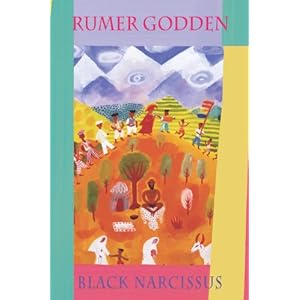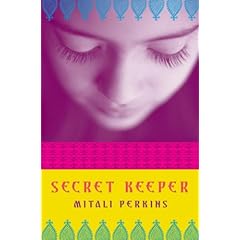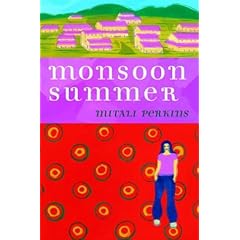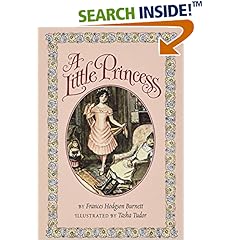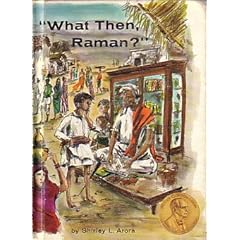Swapna Krishna of S. Krishna’s Books is a 20-something reader and book blogger from Washington, D.C. Since she’s about the age of my Eldest Daughter, it was a blast to swap interviews with her for Book Blogger Appreciation Week and get some reading recommendations from the younger generation.
We don’t know each other at all, but I am indebted to you for several good reading suggestions including Best Intentions by Emily Listfield and Eat, Drink and Be from Mississippi by Nanci Kincaid. I see that you also enjoyed The Help by Kathryn Stockett. That brief list makes me think we share a fondness for literature set in the South. Is that so, and if so, can you name other favorite pieces of Southern literature?
Yes!! I do very much enjoy literature set in the South. One of my favorite authors, not just of Southern fiction but generally, is Karen White. She specializes in Southern fiction – I love The House on Tradd Street, The Memory of Water, and The Lost Hours, just to name a few. I also loved Beth Hoffman’s Saving CeeCee Honeycutt, a book I know made its way around the blogosphere.
How did you get started as a reader? As a book blogger?
I’ve been a reader all my life – I started reading at the tender age of 3, thanks to my older sister who taught me to read! I started as a book blogger over 2 years ago. I had gotten to a point where I would buy books, bring them home, and realize I’d already read them but didn’t remember the titles because I didn’t keep track of what I was reading. I tried a paper journal, but I filled it up so quickly that it seemed silly. I’d already been reading book blogs by then, so I thought I’d start one to review books, but also just to keep a record of what I’d read!
If you could vacation in a book world, where would you go to get away from it all? What book would you like to enter into and interact with the characters?
Oooh, lovely question! This is cliche, but probably Harry Potter. I loved how vivid of a world J.K. Rowling created. Those books are still my escape when I need to get away from life for awhile. I can’t tell you how many times I’ve read them.
I read at your website that you are a member of the National Book Critics Circle. What is that, and why did you join?
The NBCC is a association of book reviewers, mostly print reviewers. I joined when I started working with The Book Studio, a book website that features video interviews with authors. I haven’t really done much with it, but it’s nice to have!
I also noticed your South Asian Review Database and your South Asian Author Challenge, a different kind of “Southern literature.”What are those all about?
That’s so true, I didn’t think of it that way, but it is a different type of Southern literature, ha! South Asia consists of countries around the Indian subcontinent – India, Pakistan, Sri Lanka, Bangladesh, Bhutan, Nepal, etc. My heritage is South Asian, so I’ve always been very interested in literature from the region. In mid-2009, I realized there wasn’t a huge presence of South Asian literature within the blogosphere, and the South Asian Challenge was an effort to rectify that. The South Asian Review Database is a place where anyone (challenge participant or not) can come to link up their reviews of books by South Asian authors. It’s all my effort to promote the literature of the region, I only wish I could do more!
What are your favorite books and/or authors from South Asia?
Well, I’ll have to include the cliche answers, Salman Rushdie and Jhumpa Lahiri. Rushdie got me interested in South Asian literature when I read The Satanic Verses in high school (though, knowing what I know now, there’s no way I could have fully understood it and I must go back and read it sometime). Recently, I’ve become a cheerleader for Thrity Umrigar. All of her books are good, but The Weight of Heaven just blew me away. Additionally, Shilpi Somaya Gowda’s The Secret Daughter was just amazing. I also love Chitra Banerjee Divakaruni (she is an incredibly prolific author, but I’ve only read 2 of her books) and Indu Sundaresan’s historical fiction.
What book or books inspire you?
Hmmm, this is a tough one. Books with beautiful writing usually inspire me, hence why I am such a fan of Salman Rushdie. Fyodor Dostoevsky, W. Somerset Maugham – these are writers I love simply because their prose speaks to me. It really stirs something within me.
What do you like to do when you’re not reading?
When I’m not reading, I’m usually spending time with my husband. He works a lot, so when he’s not working, we’re usually together. We love watching TV, and to a lesser extent, movies. I’ve gotten him into Indian movies (he isn’t Indian), so we’ve been watching more of those lately! We love to eat good food and we travel A LOT (a little too much lately, if you ask me!) I love spending time with my friends, though many aren’t local, so I do spend too much time on the phone, and it’s why I travel so much. I also just love to experience the area I live in, Washington DC.
You’re sort of a veteran book blogger. What advice do you have for those who are new to book blogging?
Funny, I don’t think of myself as a veteran! I guess my advice to those who are new to book blogging would be to READ. I know it sounds silly, but seriously. Read anything and everything. Consistent posts are crucial if you’re trying to build an audience. Additionally, I know it’s tempting to start clamoring for review copies the second you start a blog, but resist that temptation and wait for awhile! Review your own books or library books – build up a healthy review library before you start asking publishers for books.
Thanks, Swapna. I really did enjoy getting to know you and your blog, and I’m planning to read some more South Asian fiction soon. You’ve inspired me!
And here Swapna interviews me. You know, you could just be-bop back and forth all day: Swapna to Semicolon, Semicolon to Swapna, S. Krishna’s Books to Semicolon’s reviews, etc. Have a great day.
